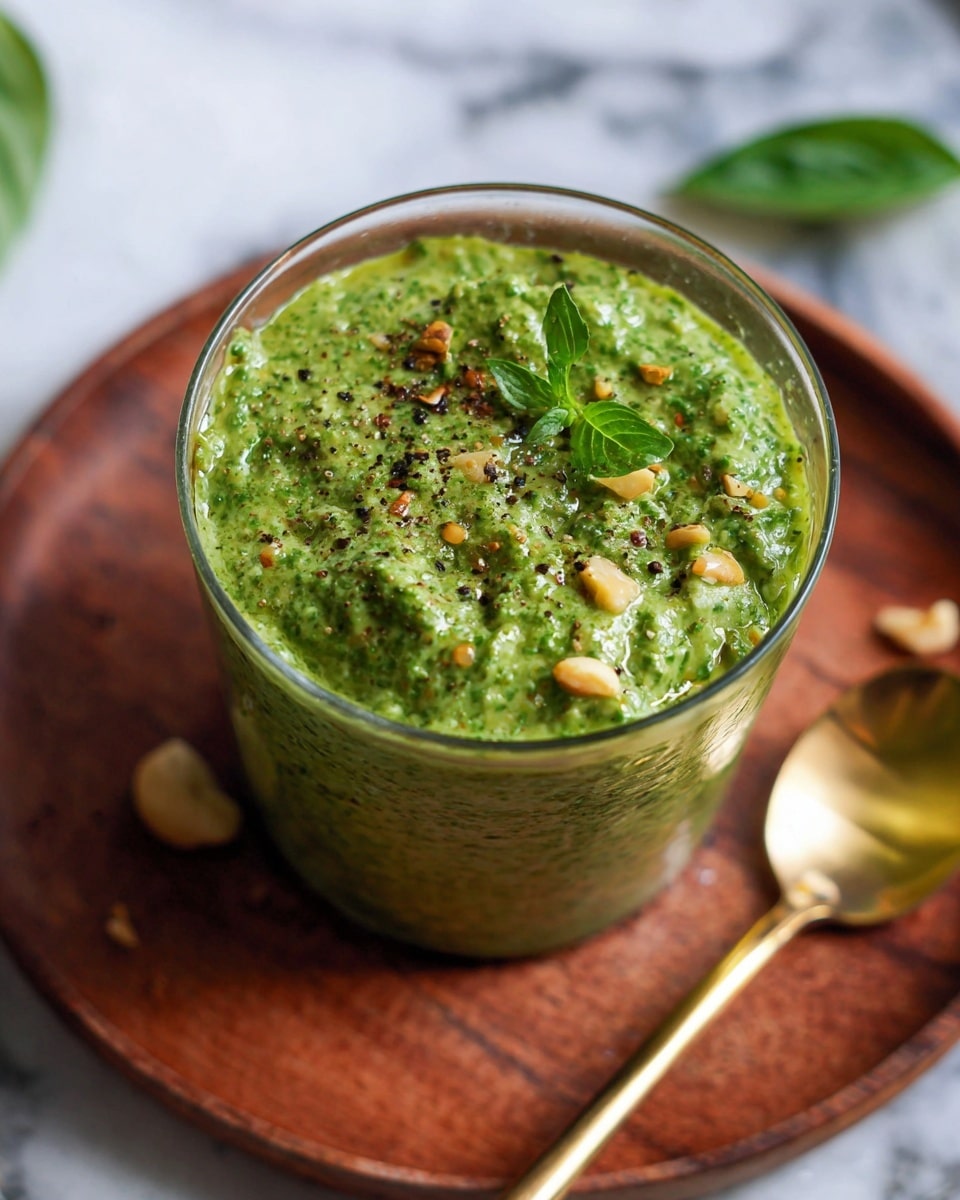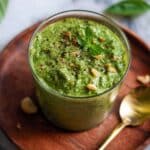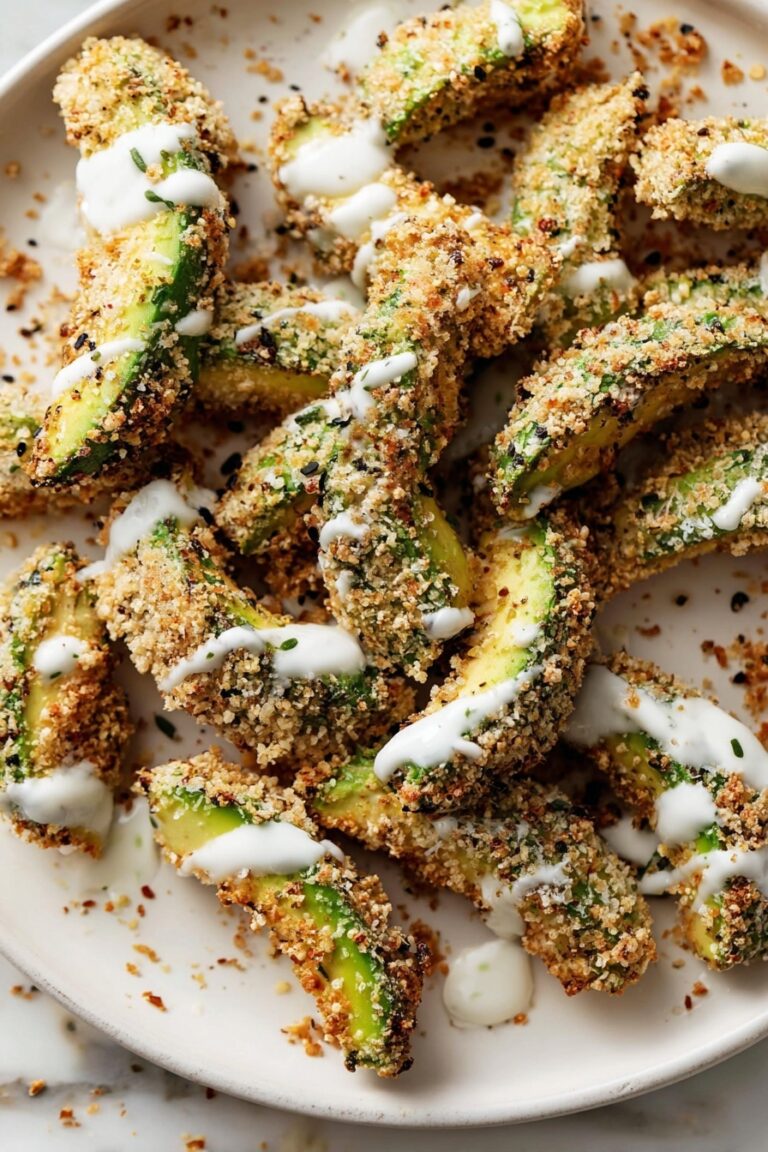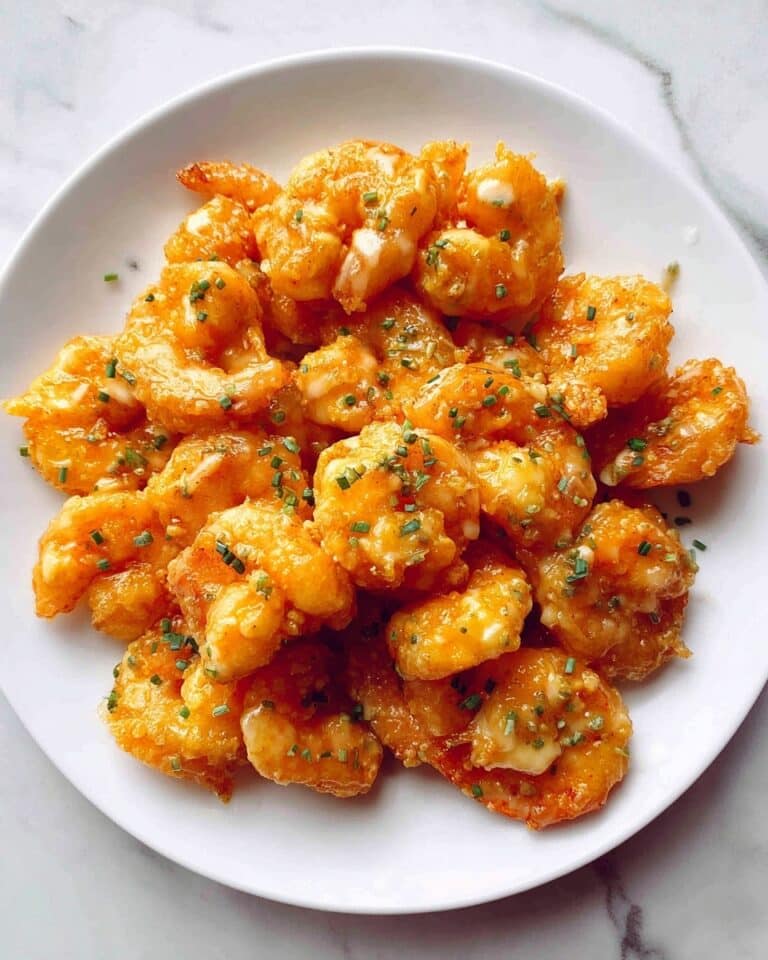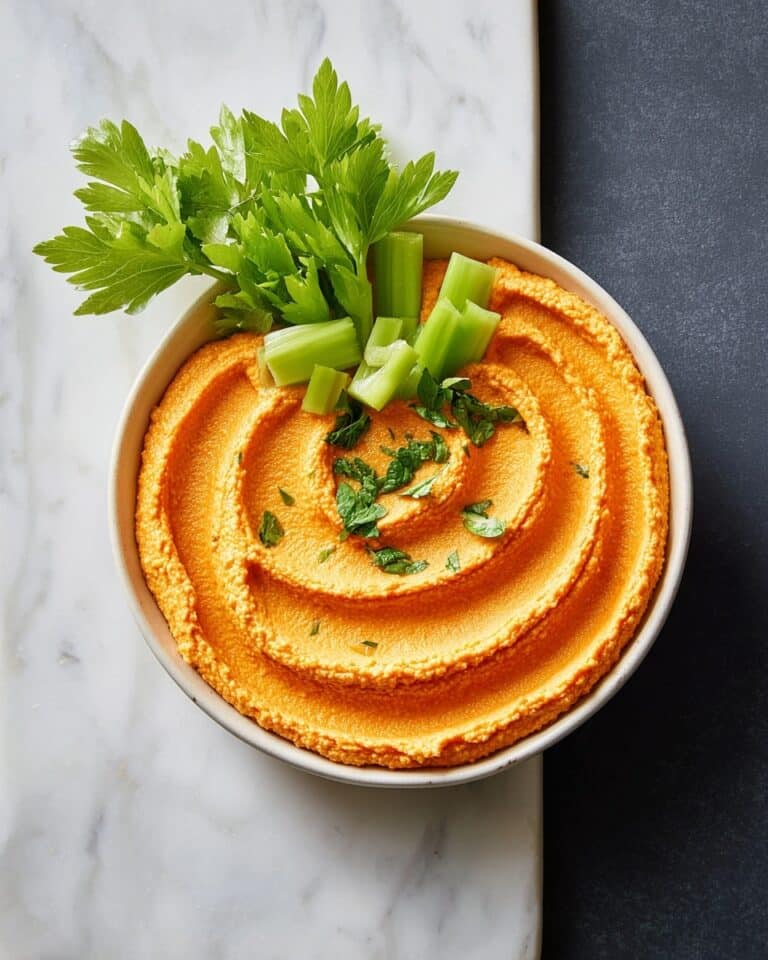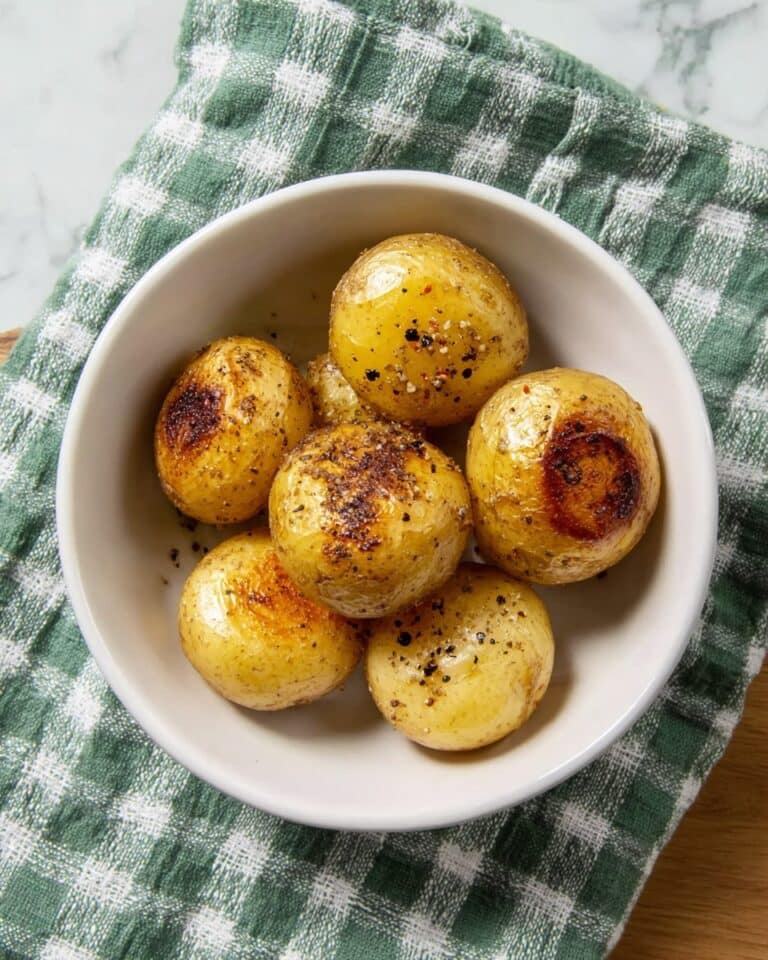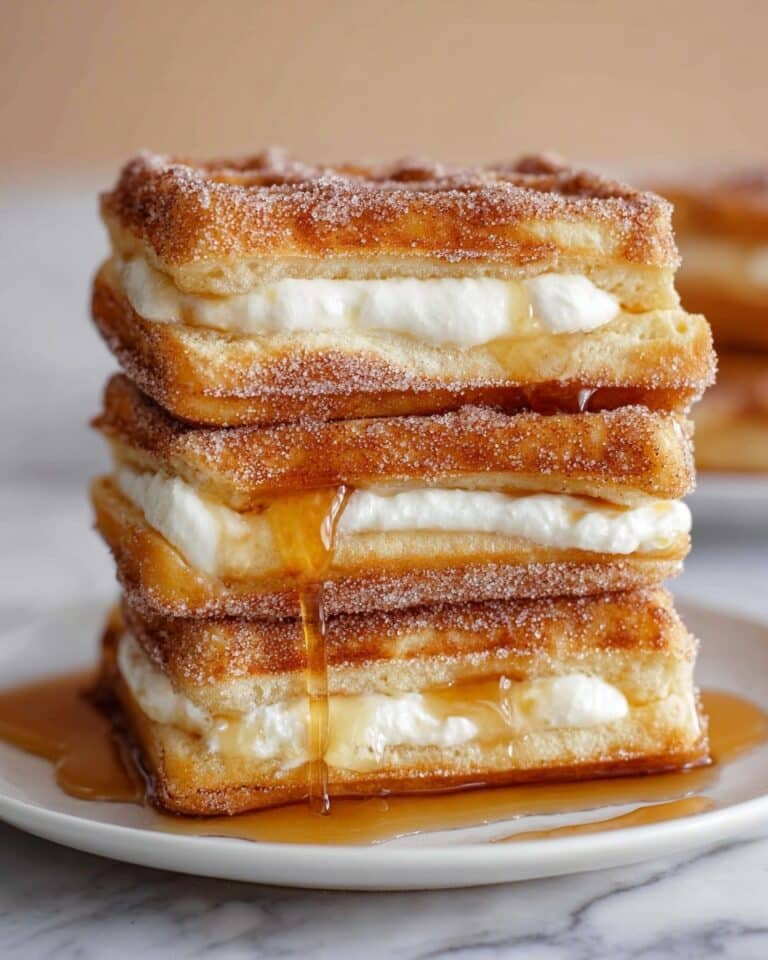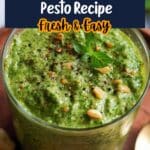I absolutely love this Classic Pesto Recipe because it captures the fresh, vibrant flavors of basil with just the right balance of garlic, pine nuts, and Parmesan. Whether you’re tossing it with pasta, drizzling it over grilled veggies, or spreading it on crusty bread, this pesto adds that irresistible homemade touch. You’ll find it’s surprisingly quick to whip up, so it’s perfect when you want a burst of flavor without spending hours in the kitchen.
When I first tried this recipe, I was amazed at how simple ingredients come together to make something so rich and memorable. Plus, this Classic Pesto Recipe is incredibly versatile; it’s the kind of kitchen staple that can elevate weeknight dinners or impress guests at gatherings. If you’ve ever been intimidated by making pesto from scratch, I promise this method breaks it down step-by-step so you’ll get the best results every time.
Why You’ll Love This Recipe
- Fresh flavor that pops: The toasted pine nuts and garlic bring out a deep, nutty essence that makes this pesto unforgettable.
- Ready in minutes: You can have this pesto made and on your table in about 4 minutes—great for busy days.
- Versatile and easy to customize: Whether you like a chunkier texture or extra cheese, you can tweak it exactly how you like.
- Kid- and crowd-friendly: My family goes crazy for this, and it’s always a hit even with picky eaters.
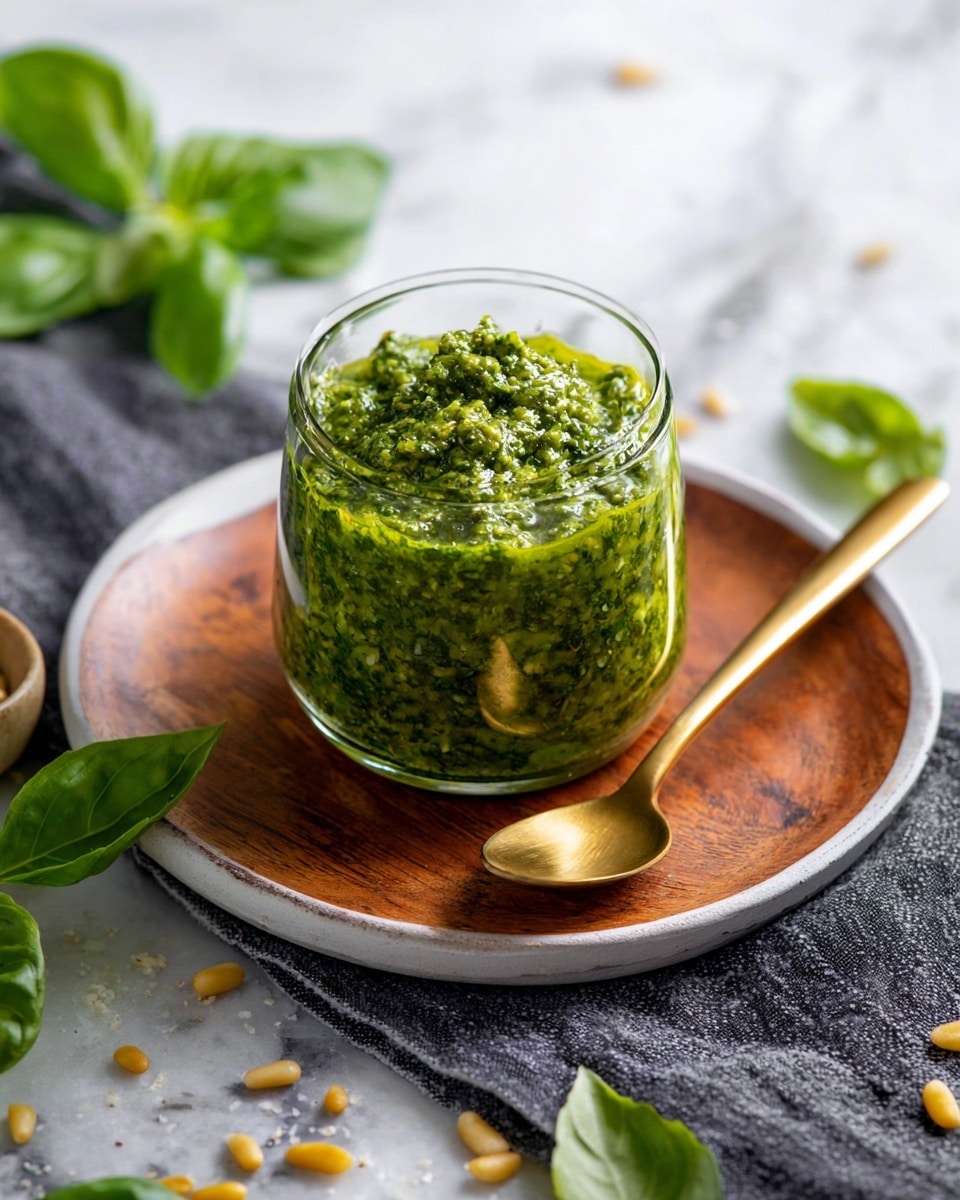
Ingredients You’ll Need
The ingredients in this Classic Pesto Recipe are simple but perfectly balanced, combining fresh basil’s aromatic sweetness with the richness of toasted pine nuts and sharp Parmesan. Using fresh, high-quality ingredients here really makes all the difference, so make sure your basil is vibrant and your cheese freshly grated.
- Pine Nuts: Toasting these brings out a buttery flavor that’s key to authentic pesto.
- Garlic: Roasting it slightly mellows the sharpness and adds depth.
- Fresh Basil: The star of the show; make sure it’s bright green and fragrant.
- Olive Oil: Use a good-quality extra virgin for the best taste.
- Parmesan Cheese: Freshly grated adds salty, nutty notes that finish the pesto beautifully.
- Salt: Adjust to taste to balance the flavors perfectly.
Note: Exact ingredients and measurements are listed in the recipe card below.
Variations
I love making the Classic Pesto Recipe my own by swapping out a few ingredients depending on what I have on hand or the flavor mood I’m in. Feel free to play around — pesto is forgiving and super adaptable, so you really can’t go wrong.
- Nut Swaps: I sometimes use walnuts or almonds instead of pine nuts, especially when pine nuts are pricey or hard to find — still delicious and adds a different nuttiness.
- Vegan Version: Leave out the Parmesan and add nutritional yeast for that cheesy flavor without dairy.
- Zesty Twist: Add a squeeze of lemon juice for a bright, fresh zing that’s especially nice on seafood or grilled chicken.
- Spicy Kick: Toss in a pinch of red pepper flakes if you like a little heat.
How to Make Classic Pesto Recipe
Step 1: Toast Pine Nuts and Garlic to Perfection
Heat a skillet over medium heat and gently toast the pine nuts and unpeeled garlic cloves together. Keep the pan moving by shaking it occasionally — this helps everything brown evenly and prevents burning. I keep a close eye here; pine nuts can go from perfectly golden to burnt in seconds. Once the pine nuts are toasted and golden, remove them from the pan but keep the garlic cooking a little longer until its skin loosens and it becomes fragrant.
Step 2: Cool and Peel the Garlic
After removing the garlic from the heat, let both it and the pine nuts cool until you can handle them comfortably. The garlic skins should peel off easily now — if not, let them cool a bit more. This step softens the garlic’s bite and gives your pesto that smooth, mellow garlic flavor I love.
Step 3: Blend Basil, Pine Nuts, Garlic, and Olive Oil
Place the fresh basil leaves, toasted pine nuts, peeled garlic, and olive oil in a blender or food processor. Pulse a few times until the mix is smooth but still has some texture — you don’t want it perfectly pureed. This rustic texture is what makes the pesto feel homemade and delicious.
Step 4: Stir in Parmesan and Season
Transfer the blended pesto to a bowl, then gently fold in the grated Parmesan cheese. Stir well and season with salt to taste. I always recommend tasting as you go — you can’t undo too much salt, so add a little at a time. Once mixed, your Classic Pesto Recipe is ready to use!
Pro Tips for Making Classic Pesto Recipe
- Don’t Skip Toasting: Toasting pine nuts and garlic develops deeper flavors that raw ingredients just don’t offer.
- Use Cold-Pressed Olive Oil: It lends a fresher, fruitier note that brightens the pesto beautifully.
- Blend in Bursts: Pulse your blender or food processor in short bursts to avoid overheating and keep a slightly chunky texture.
- Store with Olive Oil Layer: When storing, pour a thin layer of olive oil over the pesto to prevent browning and keep it fresh longer.
How to Serve Classic Pesto Recipe

Garnishes
I love topping dishes with a sprinkle of extra Parmesan and a few whole toasted pine nuts for a nice crunch and visual pop. A few fresh basil leaves tossed on top make everything look and taste even fresher. Sometimes, I add a crack of black pepper or a drizzle of good olive oil just before serving — it’s those little touches that make a difference.
Side Dishes
This pesto pairs beautifully with simple roasted vegetables, grilled chicken breasts, or fresh mozzarella salad. During warmer months, I often serve it alongside a crisp, lemony arugula salad with cherry tomatoes. It’s also fantastic spread on toasted baguette slices for an easy appetizer that everyone loves.
Creative Ways to Present
For special occasions, I like to spoon the Classic Pesto Recipe into small ramekins and drizzle with colorful edible flowers or microgreens. You can also serve it swirled on a white plate with fresh veggies arranged around it — it looks stunning and invites everyone to dive in. Another fun idea is to use it as a sauce base for a pizza topped with fresh tomatoes and mozzarella for a vibrant twist.
Make Ahead and Storage
Storing Leftovers
I store leftover pesto in an airtight jar, then pour a thin layer of olive oil on top to keep the basil from oxidizing and turning brown. It keeps well in the fridge for up to 5 days. Just bring it to room temperature before using again, and give it a quick stir — it’ll taste fresh as day one.
Freezing
Freezing this Classic Pesto Recipe is a total game changer for saving time later. I like to freeze it in ice cube trays, then pop the cubes into a freezer bag. This way, I can defrost just the amount I need for a meal. The flavor holds up really well, though the texture might be a little less vibrant after thawing.
Reheating
When reheating leftover pesto, I recommend gently warming it in a small pan over low heat or stirring a cube into hot pasta water. Avoid high heat as it can dull the fresh flavors and alter the texture. I find that letting the residual heat do the work keeps the delicious aroma and taste intact.
FAQs
-
Can I make this Classic Pesto Recipe without a food processor?
Absolutely! You can make this pesto using a mortar and pestle or even finely chop the ingredients by hand and whisk them together. The texture might be chunkier, but it will still taste amazing and have that authentic homemade feel.
-
How long does homemade pesto last in the refrigerator?
Stored properly with a layer of olive oil on top, homemade pesto lasts about 4 to 5 days in the fridge. If it starts to smell off or change color dramatically, it’s best to discard and make a fresh batch.
-
Can I use other nuts besides pine nuts for this Classic Pesto Recipe?
Yes! Walnuts, almonds, or even cashews can be great substitutes and offer different flavor twists. Toast them lightly to bring out their best taste before blending into your pesto.
-
Is it okay to use pre-grated Parmesan cheese?
For the best flavor and texture, I recommend freshly grated Parmesan. Pre-grated can sometimes be powdery and less flavorful, which can impact the quality of your pesto.
-
What can I do if my pesto turns out too thick?
If your pesto feels too thick, simply add a bit more olive oil while blending until you reach your desired consistency. Sometimes the basil can absorb a lot of the oil, so don’t hesitate to adjust gradually.
Final Thoughts
This Classic Pesto Recipe holds a special place in my heart because it reminds me of easy summer dinners with friends and family gathered around the table. It’s one of those recipes that feels fancy but is so straightforward to make. I hope as you try it yourself, you’ll enjoy the fresh, bright flavors as much as I do and find it becomes one of your go-to staples. Trust me, once you make your own pesto, you won’t want to go back to store-bought!
PrintClassic Pesto Recipe
A quick and easy classic pesto recipe featuring toasted pine nuts and garlic blended with fresh basil, olive oil, and Parmesan cheese for a vibrant and flavorful sauce perfect for pasta, sandwiches, or dips.
- Prep Time: 1 minute
- Cook Time: 3 minutes
- Total Time: 4 minutes
- Yield: 1 serving (about 3/4 cup pesto)
- Category: Sauce
- Method: Stovetop and Blending
- Cuisine: Italian
Ingredients
Toasting Ingredients
- 1/4 cup Pine Nuts plus 1 1/2 tablespoons
- 3 Cloves Garlic unpeeled
Main Pesto Ingredients
- 3 cups Fresh Basil packed
- 1/4 cup Olive Oil plus 1-2 tablespoons
- 1/4 cup Parmesan Cheese plus 2 Tablespoons, grated
- Salt to taste
Instructions
- Toast Pine Nuts and Garlic: Heat a skillet over medium heat and add the pine nuts and unpeeled garlic cloves. Toast for a few minutes or until the pine nuts turn golden brown, shaking the pan occasionally to ensure even toasting.
- Separate Toasted Ingredients: Remove the pine nuts from the pan once toasted. Continue to toast the garlic until fragrant and lightly browned, then remove from the pan and peel off their skins when cool enough to handle.
- Blend Pesto Base: Allow the toasted pine nuts and garlic to cool completely. In a blender, combine the fresh basil, cooled pine nuts, peeled garlic, and olive oil. Pulse until the mixture is smooth but retains a slightly grainy texture, indicating fresh, rustic pesto.
- Mix in Cheese and Season: Transfer the blended pesto to a bowl and stir in the grated Parmesan cheese. Add salt to taste, adjusting seasoning as desired before serving or storing.
Notes
- Toast pine nuts carefully to prevent burning, as burnt nuts will impart bitterness.
- Using fresh basil packed tightly enhances the pesto’s vibrant flavor and color.
- You can adjust olive oil quantity to achieve desired sauce consistency.
- Store pesto in an airtight container in the refrigerator; cover the surface with a thin layer of olive oil to preserve freshness and prevent oxidation.
- Pesto freezes well; divide into small portions and freeze for up to 3 months.

